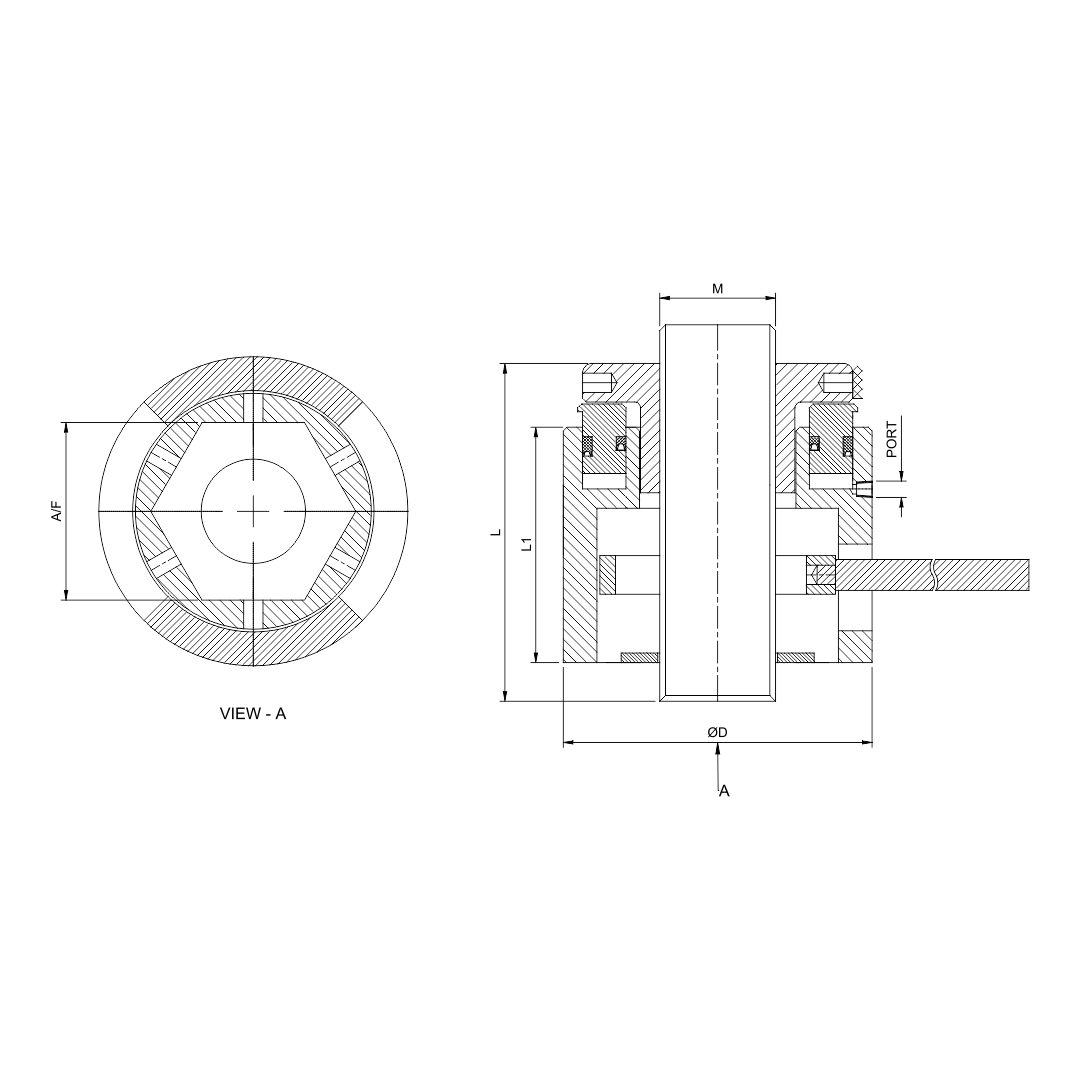

The hydraulic nut is self-aligning while under pressure and misalignment or flange rotation will produce a variation in the gap between the nut body and the piston. In the case of shim type nuts, tapered shims can be made and fitted to eliminate the effects of misalignment and flange rotation. In the case of collar type nuts, a spherical washer would need to be fitted under the hydraulic nut.


| Model Code | Size | O D | HT | Stroke | Port | Piston Area SqCm | Oil Capacity in CC | Pressure in Bar | Capacity in Kg | Wt. in Kg |
|---|---|---|---|---|---|---|---|---|---|---|
HT T080 0100 | M 20 X 2.5P | 80 | 91 | 6 | 1/4 | 17 | 10 | 300 | 5087 | 3.4 |
HT T080 0200 | M 25 X 3P | 80 | 91 | 6 | 1/4 | 17 | 10 | 300 | 5087 | 3.3 |
HT T080 0300 | M 27 X 3P | 80 | 91 | 6 | 1/4 | 17 | 10 | 300 | 5087 | 3.2 |
HT T100 0100 | M 30 X 3.5P | 100 | 100 | 6 | 1/4 | 28 | 17 | 300 | 8537 | 5.7 |
HT T100 0200 | M 35 X 4P | 100 | 115 | 6 | 1/4 | 28 | 17 | 300 | 8537 | 6.4 |
HT T100 0300 | M 40 X 4P | 100 | 115 | 6 | 1/4 | 28 | 17 | 300 | 8537 | 6.1 |
HT T100 0400 | M 42 X 4.5P | 100 | 115 | 6 | 1/4 | 28 | 17 | 300 | 8537 | 6.0 |
HT T160 0100 | M 45 X 4.5P | 160 | 155 | 6 | 1/4 | 83 | 50 | 300 | 24904 | 22.7 |
HT T160 0200 | M 50 X 5P | 160 | 155 | 6 | 1/4 | 83 | 50 | 300 | 24904 | 22.3 |
HT T160 0300 | M 55 X 5.5P | 160 | 155 | 6 | 1/4 | 83 | 50 | 300 | 24904 | 21.7 |
HT T160 0400 | M 60 X 5.5P | 160 | 155 | 6 | 1/4 | 83 | 50 | 300 | 24904 | 21.3 |
HT T195 0100 | M 65 X 6P | 195 | 177 | 6 | 1/4 | 127 | 76 | 300 | 38210 | 37.2 |
HT T195 0200 | M 70 X 6P | 195 | 177 | 6 | 1/4 | 127 | 76 | 300 | 38210 | 36.5 |
HT T195 0300 | M 75 X 6P | 195 | 177 | 6 | 1/4 | 127 | 76 | 300 | 38210 | 35.9 |
HT T195 0400 | M 80 X 6P | 195 | 177 | 6 | 11/4 | 127 | 76 | 300 | 38210 | 35.1 |
HT T245 0100 | M 85 X 6P | 245 | 224 | 6 | 1/4 | 203 | 122 | 300 | 60995 | 73.5 |
HT T245 0200 | M 90 X 6P | 245 | 224 | 6 | 1/4 | 203 | 122 | 300 | 60995 | 72.4 |
HT T245 0300 | M 95 X 6P | 245 | 224 | 6 | 1/4 | 203 | 122 | 300 | 60995 | 71.2 |
HT T245 0400 | M 100 X 6P | 245 | 224 | 6 | 1/4 | 203 | 122 | 300 | 60995 | 69.9 |